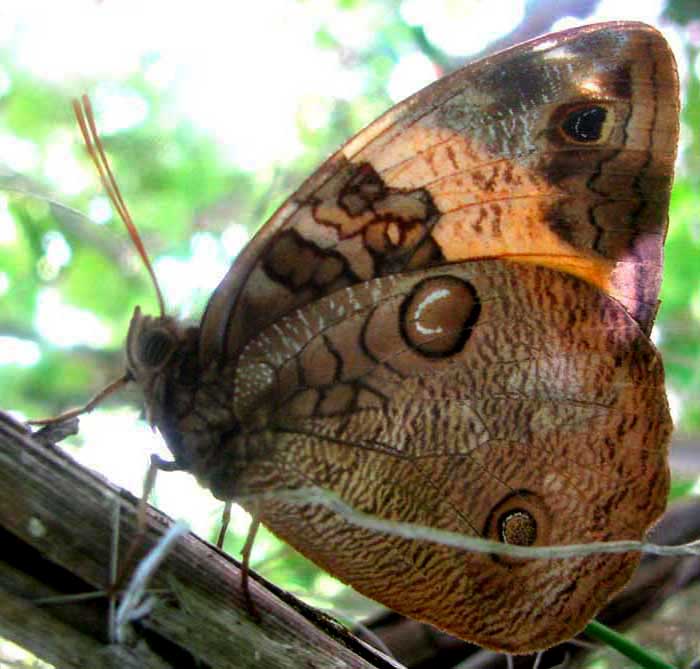Excerpts from Jim Conrad's
Naturalist Newsletter

from the October 2, 2011 Newsletter issued from Mayan Beach Garden Inn 20 kms north of Mahahual; Caribbean coastal beach and mangroves, ~N18.89°, ~W87.64°, Quintana Roo state, MÉXICO
OWL-BUTTERFLY
Bea had a hard time tracking down the identity of the handsome, fairly large butterfly shown above. One problem was that we began with the assumption that, with those conspicuous circular "eyes" on the wings, we had a Buckeye butterfly or a close relation, Buckeyes being common, eye-winged butterflies up North also found here. But Bea looked at all Buckeye variations and close relatives and none were exact fits.
Eventually she made a match under the name Split-banded Owl-Butterfly, OPSIPHANES CASSINA*, a somewhat common species throughout much of the American tropics, specializing in disturbed areas especially near palms, which fits us exactly.
Adult butterflies feed on rotting fruits and wet dung but the green caterpillars feed on palm fronds, and it's true that ours was photographed on a Chit Palm frond petiole. Females deposit one egg each at the base of several palm fronds in late afternoon. When the larvae hatch they crawl up the fronds and begin eating the leaves. When the caterpillar is ready to pupate it builds a shelter by folding a frond section over itself.
While here I've only seen this one Split-banded Owlet, in monoculture oil-palm plantations the species' caterpillars become so abundant that plantation managers use chemicals to kill them.
The genus Opsiphanes is home to several species which in general are considered to be almost mothlike in behavior -- active nocturnally, and during the twilight of dawn and dusk, when they are "crepuscular." Ours was found in dim dawn light.
Owl-butterflies are closely related to the big Blue Morphos we've admired so in the past, despite owl-butterfly wings not being blue inside.